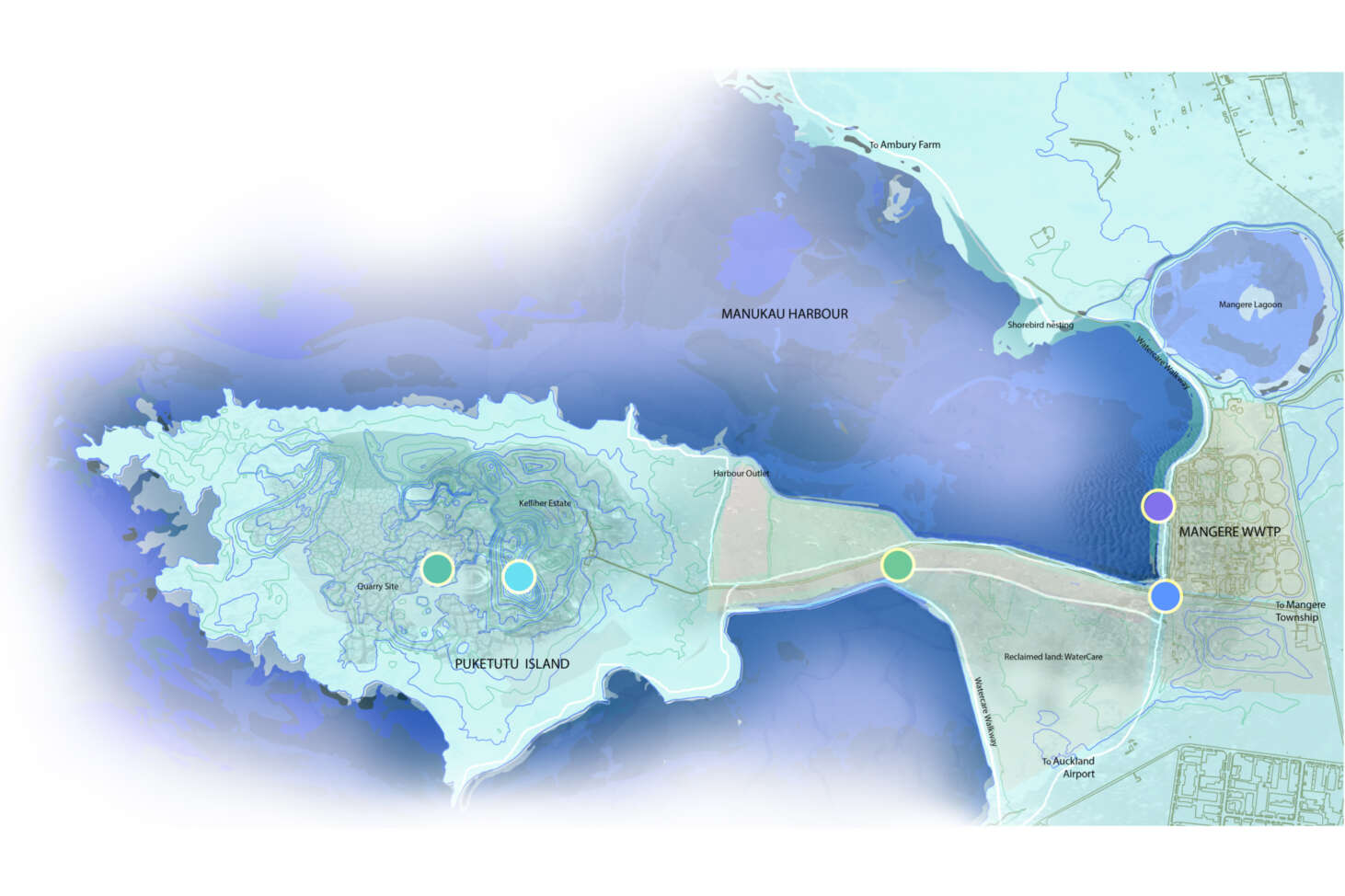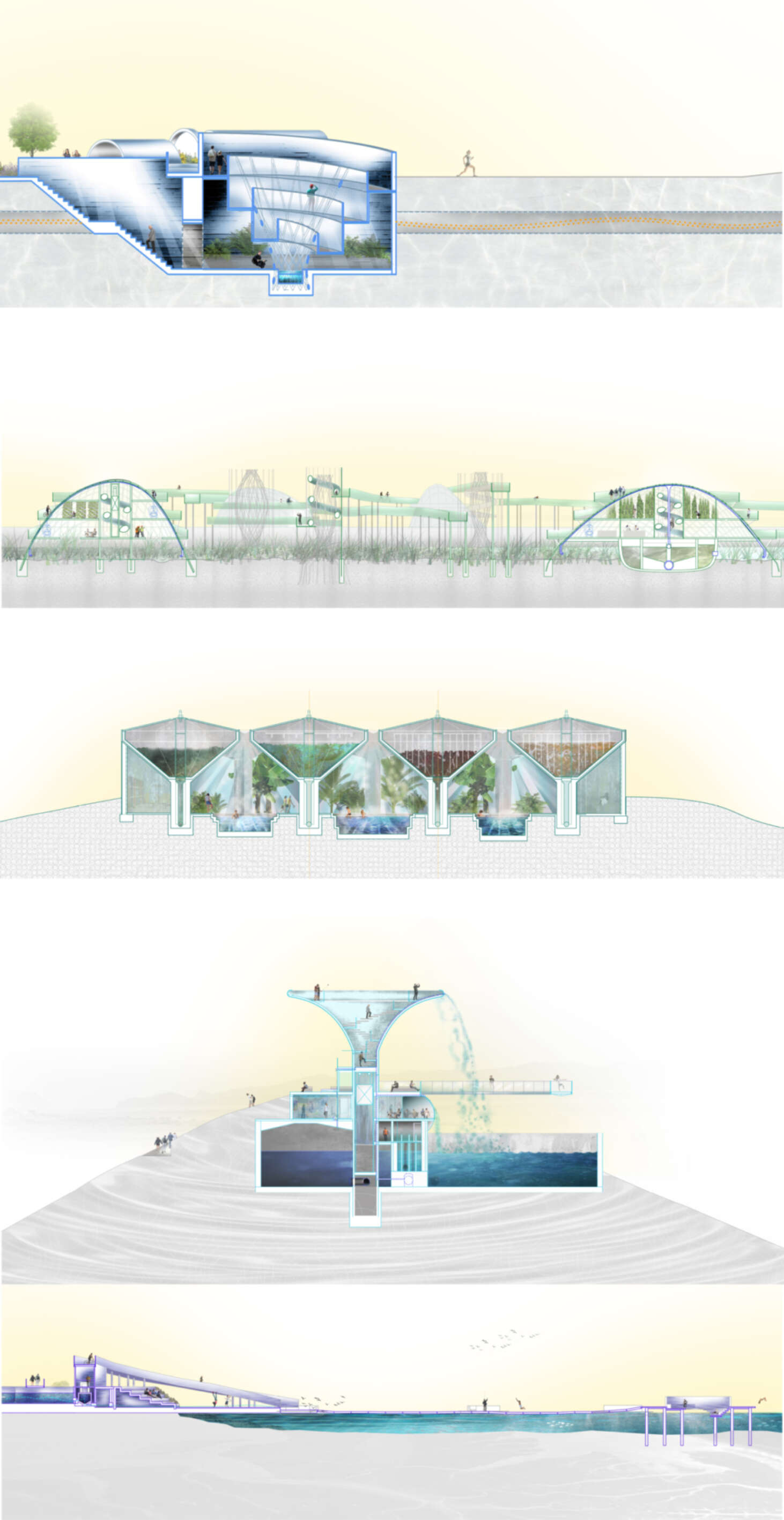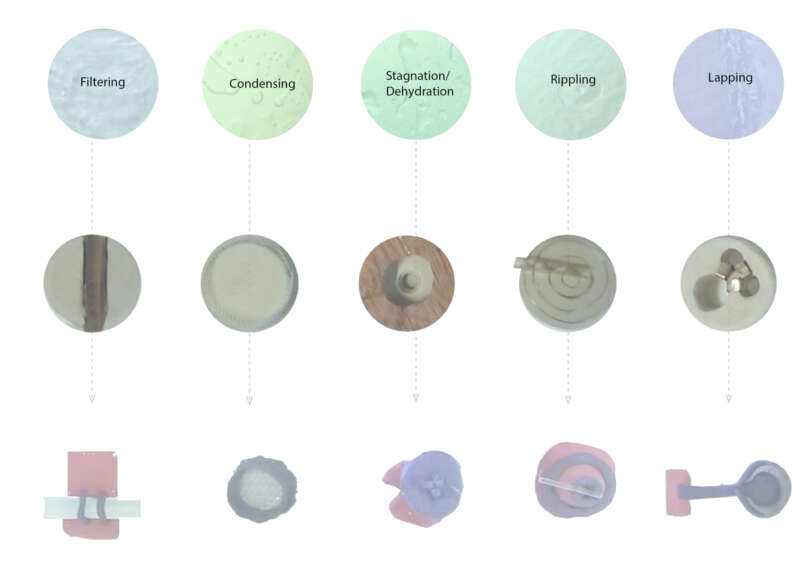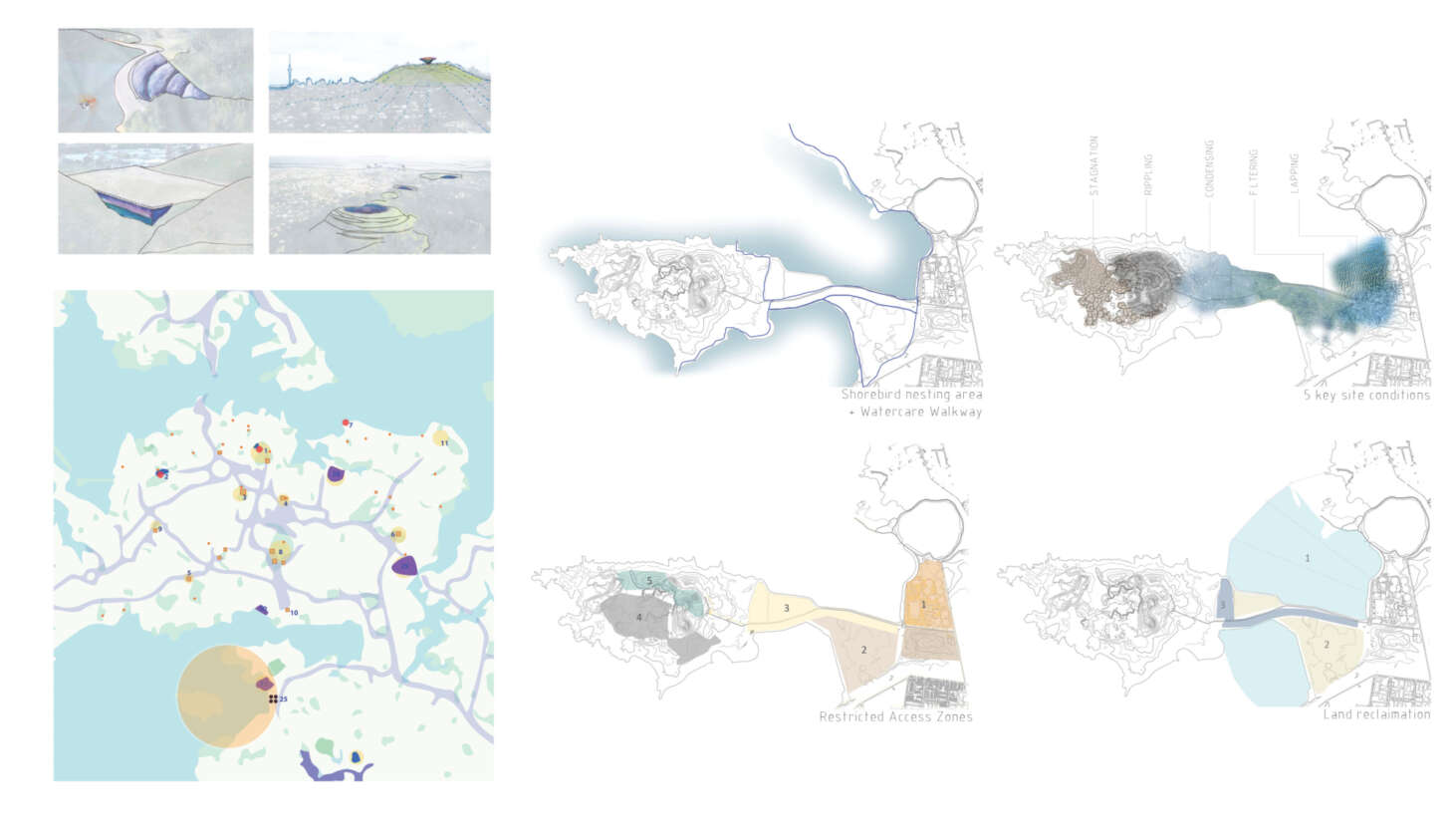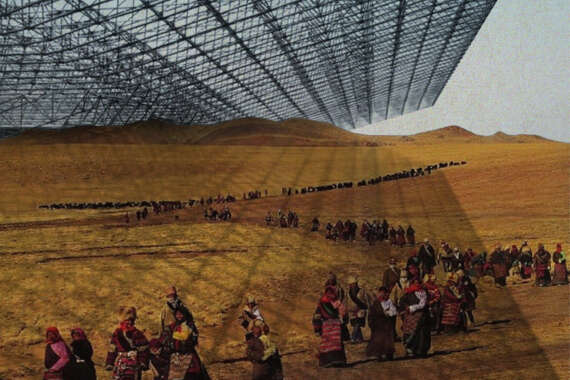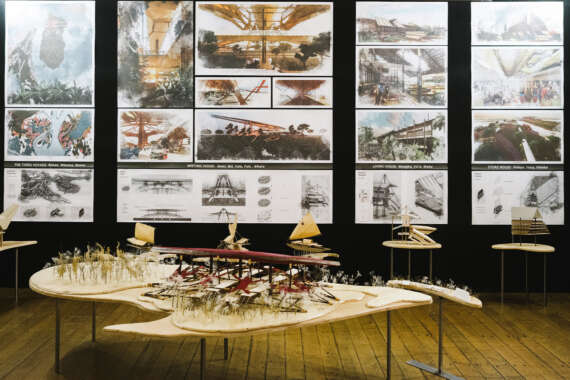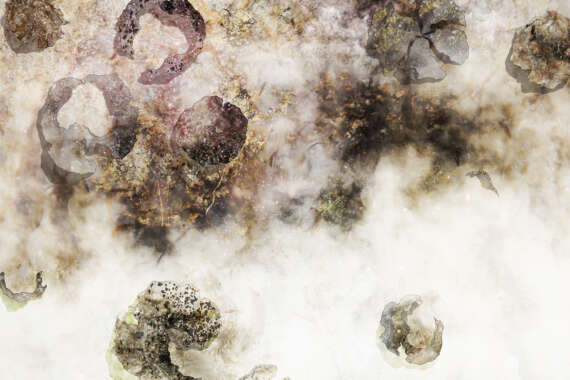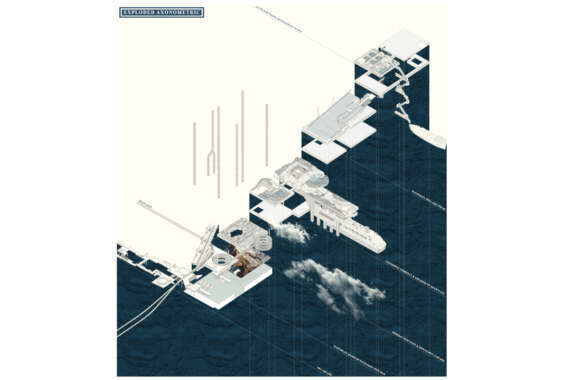INFRATECTURE H2O: Waste not, Want not

Insufficient supply and inadequate control of water in cities is one of the most concerning global issues facing urban settlements in the immediate future. This is elevated by the mounting demands of increasing populations living in urban areas and reliant on limited resources. Yet in the same way that many consumers have become increasingly distant from the origins of the products they use, so have urban populations become distanced from the hidden infrastructure that is essential to our existence, yet is seldom seen or appreciated by us in our everyday lives.
How can water infrastructure be re-imagined to serve as a public amenity?
The critical aim of this research is to address the current disassociation between urban populations and the resource of water. In doing so, this project contributes to a theory of human resilience, which relies on human intervention with the natural environment in the quest for securable resources to sustain populations in urban conditions.
On top of this sits the critical questioning of the role of architecture in shaping our infrastructure. Through the interrogation of precedents, both existing and un-built projects of diverse scales, this research sets up the framework for a new typology of built work, INFRATECTURE. The research is then used to formulate new roles that this infratecture might take on.







